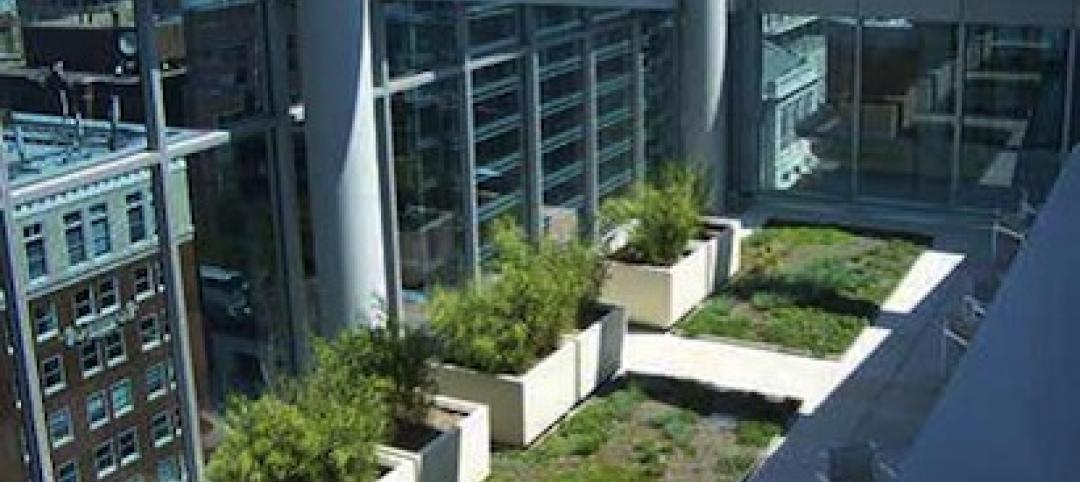Today the STO Building Group and Layton Construction announced their intent for the nationally-ranked commercial construction firm to join the STO family of companies. The merger will allow both firms to leverage each other’s geographic reach to better serve clients with multiple locations and enhance the services and areas of expertise they can offer across that expanded footprint.
“Joining the STO family provides our customers greater support nationwide and our employees greater opportunities to grow professionally and personally. This is the next logical step in our evolution as a growing, successful company,” says David S. Layton, president and CEO of Layton Construction. “The alignment of both our cultures and our ability to adhere to our Layton Way was a driving factor—it allows us to capitalize on relationships nationwide and expand our areas of expertise while continuing to provide our customers with the predictable outcomes they have come to expect from Layton.”
Layton Construction is a nationally-ranked commercial contractor with proven experience in virtually every industry, including healthcare, retail, hospitality, manufacturing, distribution, education, office, industrial, detention, tenant improvement, and public facilities. Headquartered in Utah, the 1,000-person firm also has offices in Arizona, California, Colorado, Florida, Hawaii, Idaho, and Tennessee. Some of the company’s signature projects include the Eccles Theater in Salt Lake City, the Faena Forum in Miami, the University Hospital in San Antonio, the Montage Deer Valley in Park City, Rice-Eccles Stadium at the University of Utah, Monarch Beach Resort in Dana Point, Kapi’olani Medical Center in Honolulu, Koloa Landing on Kauai, Saint Alphonsus Medical Center in Boise, The Ritz-Carlton Paradise Valley, Nationwide Insurance Scottsdale, the Boise Airport, the Westdrift Hotel in Los Angeles, the Ae`o Tower in Honolulu, and Vanderbilt University Residential Towers in Nashville.
“Layton is a terrific addition to our family of companies,” says Robert Mullen, STO Building Group CEO. “Not only will their reach bring us into new areas of the country, but their expertise will enhance the services we can offer our clients, such as their extensive, national portfolio of projects in the healthcare and industrial sectors. Our ability to offer stock ownership to employees was another key factor in their decision. We are thrilled to have them join STO.”
Formerly operating as the Structure Tone Organization, STO recently restructured as the STO Building Group to provide a platform for growth that allows each of its member companies to maintain their cultural identity while leveraging the strengths of a multicompany organization. In the last three years, Canadian firm Govan Brown and US firms Ajax Building Company and BCCI Construction have merged with STO Building Group.
“Opportunities like this with Layton are the very reason we shifted our company structure to STO Building Group last year,” says James Donaghy, STO Building Group executive chairman. “We value the reputation and heritage of the firms who merge with our organization, and each has kept its name as a way to honor that legacy. As we continue to grow, we want to respect that history, but also reflect the collective expertise our companies offer and allow our employees to benefit from the larger organization’s resources.”
The merger is expected to be completed by the end of December 2019. Layton Construction will retain its name, logo, and cultural identity, and its current leaders will retain an ownership position in the organization and maintain their roles as the senior leadership team of the business. It is anticipated that new job opportunities will be created as a result of the merger to support the company’s projected growth for 2020 and beyond.
Related Stories
| Dec 24, 2013
First Look: Calatrava's Sharq Crossing in Doha, Qatar [video]
The government of Qatar has released details of Sharq Crossing, a massive infrastructure project designed by Spanish architect Santiago Calatrava.
| Dec 23, 2013
MBI commends start of module setting at B2, world's tallest modular building
The first modules have been set at B2 residential tower at Atlantic Yards in New York, set to become the tallest modular building in the world.
| Dec 23, 2013
First Look: KPF's dual-tower design for Ziraat Bank in Istanbul
Kohn Pedersen Fox Associates (KPF) is designing a new headquarters for Turkey’s largest and oldest financial institution, Ziraat Bank, in a modern, suburban district of Istanbul.
| Dec 20, 2013
Top healthcare sector trends for 2014 (and beyond)
Despite the lack of clarity regarding many elements of healthcare reform, there are several core tenets that will likely continue to drive transition within the healthcare industry.
| Dec 20, 2013
Must see for the holidays: Architects re-create iconic structures using gingerbread
Gensler, PBK, Page Sutherland Page, and Kirksey were among the firms to compete in the 5th Annual Gingerbread Build-Off.
| Dec 20, 2013
Can energy hogs still be considered efficient buildings? Yes, say engineers at Buro Happold
A new tool from the engineering firm Buro Happold takes into account both energy and economic performance of buildings for a true measure of efficiency.
| Dec 20, 2013
Ten spectacular contemporary churches [slideshow]
German building-information provider Emporis compiles a photographic tour of inspirational spaces.
| Dec 19, 2013
NRDC report relates green infrastructure investments to commercial property value [Infographic]
The Natural Resources Defense Council has released The Green Edge: How Commercial Property Investment in Green Infrastructure Creates Value -- a first-ever illustrative and well-documented report that helps demonstrate the value of green infrastructure. It draws from available published material to capture the multitude of tangible, monetizable non-water quality and water quality benefits that green infrastructure investments (trees, rain gardens, and porous pavement, rainwater harvesting cisterns, bioswales, etc.) can unlock for the commercial real estate sector, including commercial property owners and their tenants.
| Dec 19, 2013
Mastering the art of crowd control and visitor flow in interpretive facilities
To say that visitor facility planning and design is challenging is an understatement. There are many factors that determine the success of a facility. Unfortunately, visitor flow, the way people move and how the facility accommodates those movements, isn’t always specifically considered.
| Dec 19, 2013
Urban populations, climate change demand resilient design: Report
With over fifty percent of the population already living in urban areas, cities must grapple with the potentially catastrophic effects of climate change (think: Superstorm Sandy in New York). In a new report, Jones Lang LaSalle has identified steps cities can take to make their infrastructure more resilient to changing climate conditions.

















